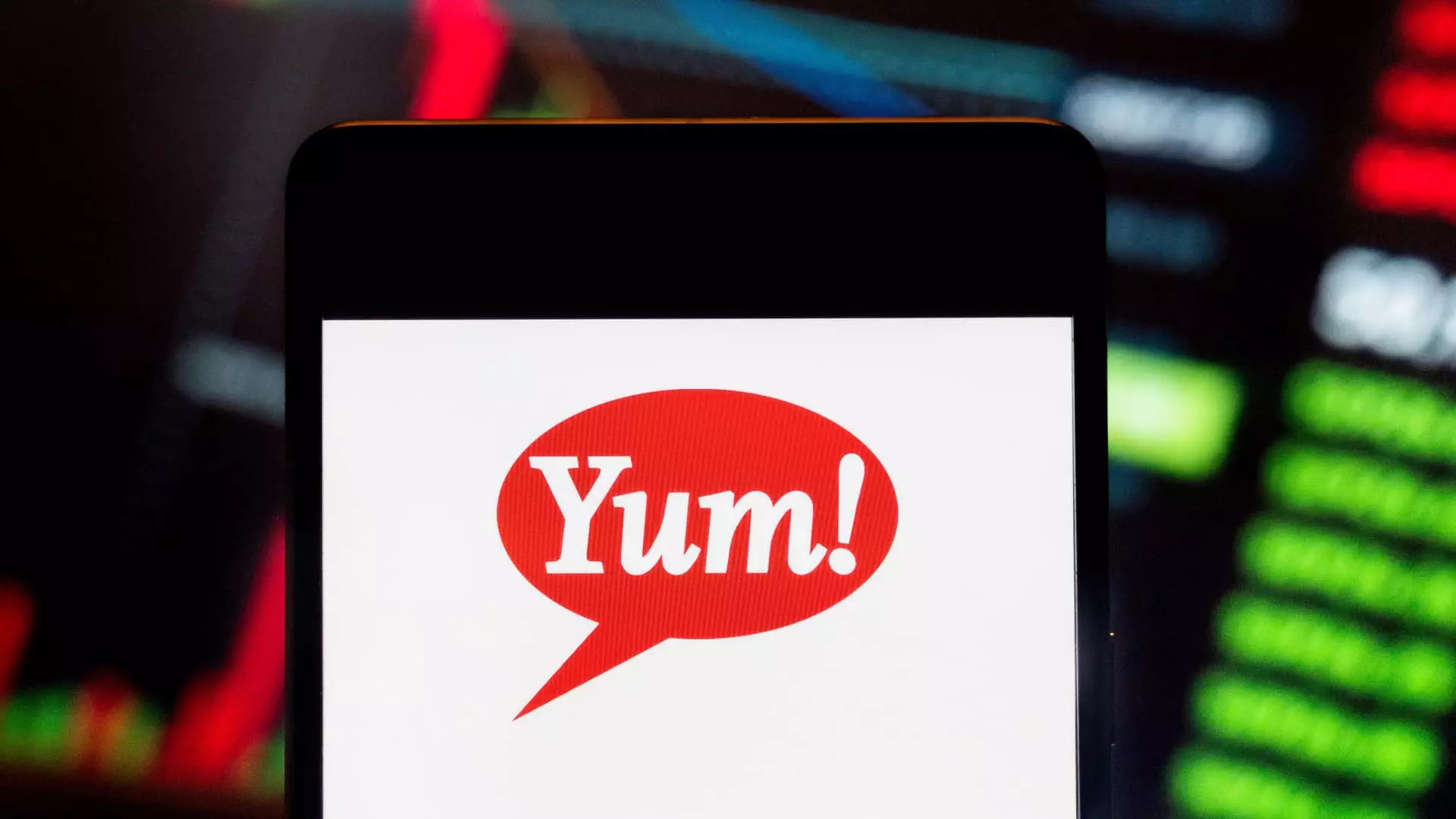Yum Brands has recently unveiled a less-than-favorable set of financial results for the third quarter, revealing challenges that may signify broader issues within its portfolio of globally recognized fast-food brands. This analysis aims to delve into the financial performance as detailed in the latest earnings report, the implications of these results, and the strategic moves expected in the near future.
In a world where consumer sentiment and economic conditions fluctuate, Yum Brands has found itself battling against the tide. The company’s reported earnings per share of $1.37 fell short of the anticipated $1.41, and revenues were also lacking, coming in at $1.83 billion compared to the expected $1.90 billion. This trend underlines a growing disconnect between the expectations of investors and the actual performance of the company. Despite a slight increase in net sales—up 7% year-over-year—the overall net income dipped from $416 million, or $1.46 per share, to $382 million, or $1.35 per share. These figures provoke questions regarding the sustainability of Yum’s growth strategy and its ability to navigate a challenging marketplace.
Yum’s decline in same-store sales—specifically a 2% global decrease—serves as a stark indicator of underlying issues. The notable declines at KFC and Pizza Hut, each plunging by 4%, highlight that even key brand players are not immune to regional economic adversities. These sales drops have been attributed to various elements disrupting consumer spending, including political unrest and a general decline in consumer confidence around the globe. Particularly, the ongoing conflicts in the Middle East have severely impacted KFC’s performance, with same-store sales down by as much as 45% in key markets like Indonesia and Malaysia. This unprecedented drop begs the question of how Yum can adapt to or mitigate these external pressures.
With KFC struggling in critical markets and losing ground to competitors like Popeyes, leaders at Yum Brands have indicated a shift towards a value-oriented approach as they head into the fourth quarter. This decision aims to rejuvenate the brand amidst intense competition and a challenging economic landscape. Additionally, Pizza Hut’s international markets, which reported a 6% slump in same-store sales, will require significant strategic realignment to enhance its value proposition and regain traction against regional competitors. The targeted focus will likely include more aggressive discounting efforts, particularly in high-potential regions like China and India.
Amidst the struggles faced by KFC and Pizza Hut, Taco Bell emerges as a standout performer in Yum’s portfolio, reporting a commendable 4% growth in same-store sales. The chain has succeeded in capturing customer interest through innovative menu offerings, including the popular Cheesy Street Chalupas and a $7 value meal. Leadership stresses Taco Bell’s competitive edge lies in its value perception, which has reportedly outpaced that of other fast-food chains during this industry-wide slowdown. Such triumph suggests that targeted marketing and product innovation could be essential across Yum’s entire brand range.
Yum Brands’ latest earnings report signals a crucial juncture for the company. With market dynamics shifting rapidly, it will need to adopt more resilient strategies to address the variances in regional performances. As the company navigates these financial setbacks, it remains imperative that it maintains transparency with investors and executes innovative solutions to enhance consumer engagement and brand loyalty. Now more than ever, strengthening its core offerings while remaining adaptable to global challenges will determine Yum’s capability to fulfill its previously outlined long-term growth aspirations—including the ambitious goals of 5% unit growth and 8% operational profit growth.
Yum Brands faces significant hurdles ahead, but with strategic realignments and a focus on value, there may still be a path to stabilize and eventually enhance its market performance. Whether this can be achieved remains to be seen as the fast-food giant maneuvers through an increasingly complex and dynamic landscape.

